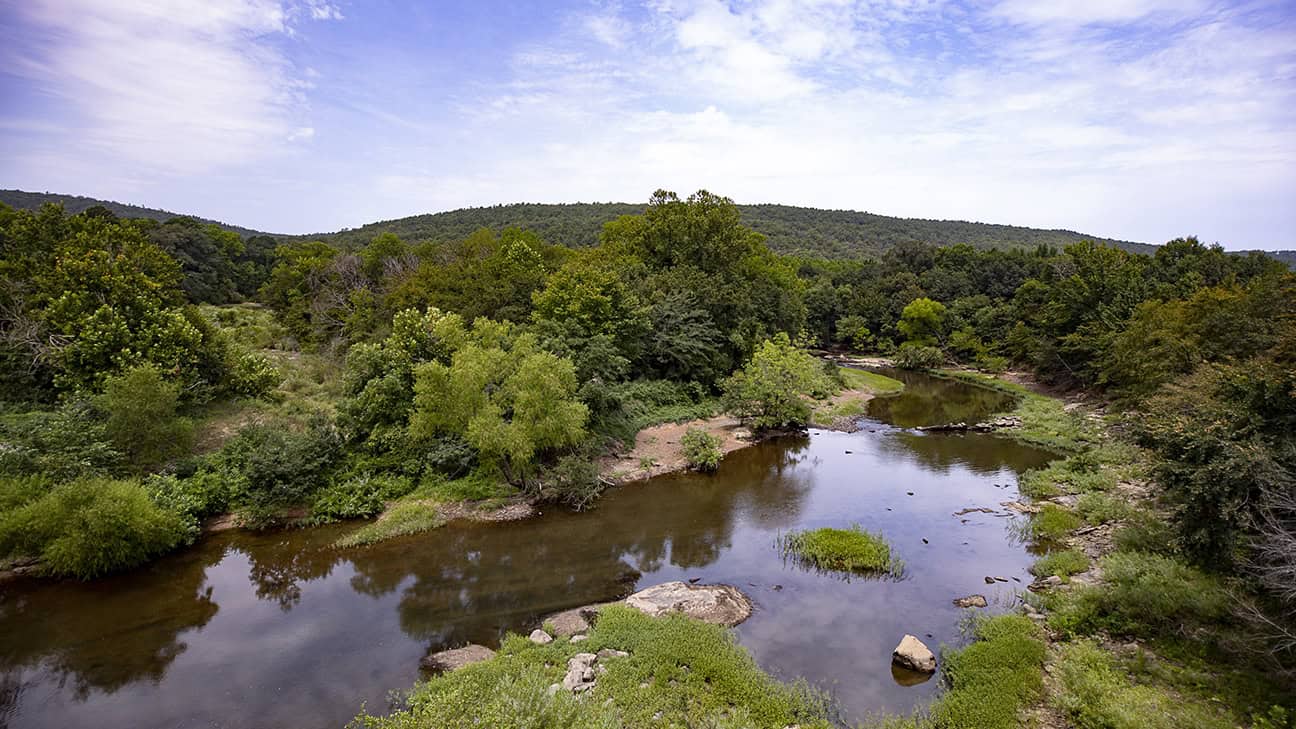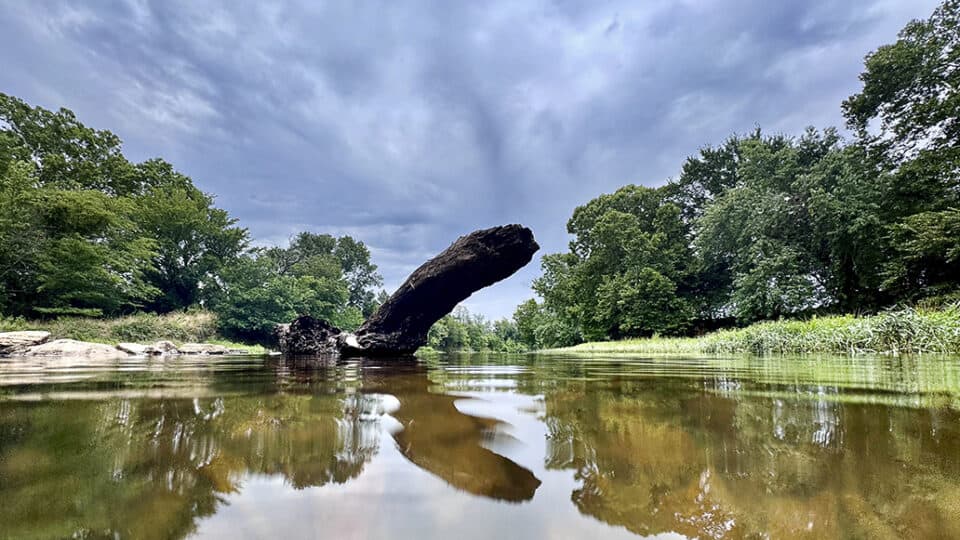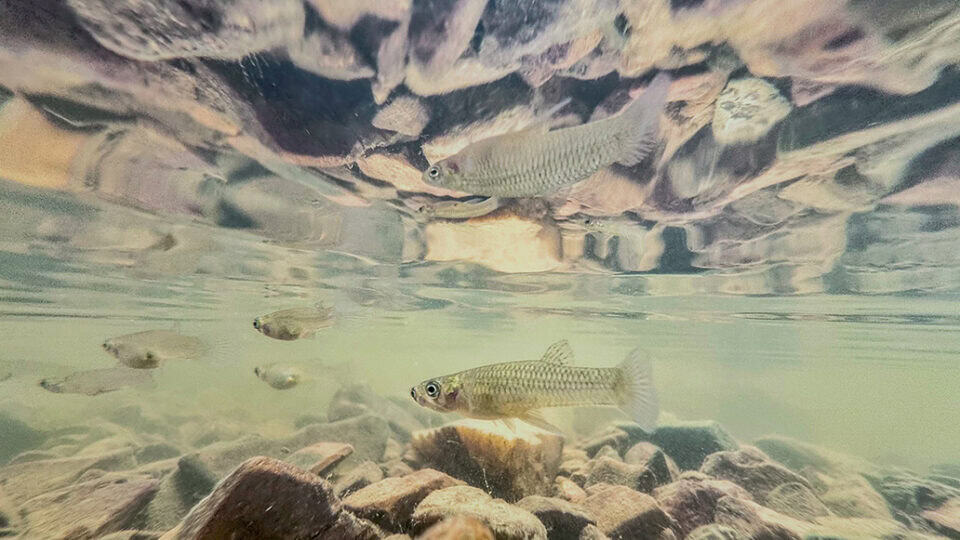
Many feel that the beauty of the Kiamichi River is in jeopardy if the pumped storage hydroelectric power station is approved.
Choctaw Nation opposes hydropower project to protect sovereignty
Tribe looks forward to discussions with federal agencyPublished September 4, 2024By Chris Jennings
On July 13, 2024, the Choctaw Nation Tribal Council unanimously voted to oppose a proposed pumped storage hydroelectric power station (PSH) in Pushmataha County. The PSH project would supply electricity to Texas residents.
A pumped storage hydroelectric power station mainly consists of two water reservoirs at different elevations. Electricity is generated as water passes through a turbine as it moves down from the upper reservoir to the lower reservoir.
Southeast Oklahoma Power Corp. (SEOPC) has proposed the installation of the PSH along the Kiamichi River in Pushmataha County, Oklahoma, approximately five miles south of Talihina, Oklahoma. The project would include a transmission line extending through Pushmataha and McCurtain Counties in Oklahoma and Red River and Lamar Counties in Texas ending in Paris, Texas.
According to documents provided by the Federal Energy Regulatory Commission (FERC), the project would consist of construction of a new 599.5 acre upper reservoir with a 886-foot-long upper dam and a 887.37 acre lower reservoir with a 13,615-foot-long lower dam.
Initial fill water and make-up water would be provided via a concrete intake channel on the Kiamichi River.
To give a scope to the size of the project, the 886-foot-long upper dam would be the equivalent of 2.8 stickball fields; the 13,615-foot-long lower dam would be equal to 45.3 stickball fields. That’s just over a 2.5 mile long for the lower dam for those who don’t measure distances in stickball fields. The SEOPC has said there will be no dam across the Kiamichi River.
In a letter to FERC, Choctaw Nation Chief Gary Batton expressed his opposition to the project. “The Choctaw Nation is a federally recognized sovereign nation with rights and obligations to protect our homeland, including cultural and ecological resources and community,” said Chief Batton.


Culture at risk
Several cultural and ecological resources have been identified by the Choctaw Nation Historic Preservation Department (CNHPD). In a letter submitted to FERC, the CNHPD said, “Without knowing the precise project location, we have conducted a preliminary review of the Choctaw Register of Historic Places for sites located within a 5-mile radius of the project area. This search identified 36 historic archaeological sites, including 14 Choctaw Cemeteries.”
Also, mentioning that they did not know the precise location of the proposed site, in a letter dated July 25, 2024, the Oklahoma Historical Preservation Society said they had not received adequate maps or location information to identify the project area of potential effect.
The CNHPD also expressed concern about the ability to communicate with parties concerning the project, saying in a letter dated July 8, 2024, that when they tried to contact the SWCA tribal liaison listed in the pre-application document on June 7, 2024, the number had been disconnected.
The Chickasaw Nation has also expressed concerns over the lack of communication about the project. In a letter dated July 8, 2024, Governor Bill Anoatubby said, “Hydropower plants have deep and lasting impacts on the regions in which they are built, and the outreach accompanying them should reflect the level of seriousness appropriate to such impactful matters.”
Area residents and those who could be affected by the project have also voiced their opinions. As of August 13, 2024, nearly 300 letters of opposition have been submitted to FERC regarding the project. Many citing a disruption of well-being and livelihood.
One landowner near Hugo, Oklahoma wrote in his letter, “I fear that the creek will eventually be dry most of the year. This creek is a main water source for an abundance of wildlife in our area…I also have concerns about the ground water levels if so much run-off is captured up stream. I am completely dependent on my well for my home and livestock use. We do not have a rural water system in our area.”

The concern about the amount of water and how the PSH project may affect the flow of the river were also brought up by Kenneth Collins, a field supervisor with the United States Department of the Interior Fish and Wildlife Services, who wrote in a letter to FERC, “The expected decreased flows below the pumps could reduce the quantity and quality of aquatic habitat downstream.”
Collins went on to explain, “Flows in this reach of the river often may be very low naturally during certain times of the year in the absence of any artificial pumping efforts.
The estimated average flow in the Kiamichi River at the proposed extraction point (approximately 12 miles upstream from the confluence with Jackfork Creek) in August is only 50 cfs and minimum flows can be zero cfs for any time of year.”
Wildlife at risk
Collins also listed several federally-listed, proposed or candidate species that could be impacted by the PSH project.
Some of those species are:
- Indiana bat
- Northern long-eared bat
- Ouachita rock pocketbook freshwater clam
- Scaleshell mussel
- Winged mapleleaf freshwater mussel
- The threatened American burying beetle
- Rabbitsfoot mussel
The Monarch butterfly, along with several migratory birds, is also listed as a potential species that could be impacted, particularly by the nearly 100 miles of power lines associated with the PSH project.
“In conclusion, the Service believes the potential impacts of the Project and related adverse effects to federally-listed species would require formal consultation on this project through Section 7 of the Endangered Species Act,” Collins said in his letter.
“The Choctaw Nation is committed to the sustainable use and protection of our natural resources within the reservation,” said Chief Batton.
Water is a resource that the Choctaw Nation takes seriously, not just for tribal members but the non-tribal community members who also rely on it for their livelihood.